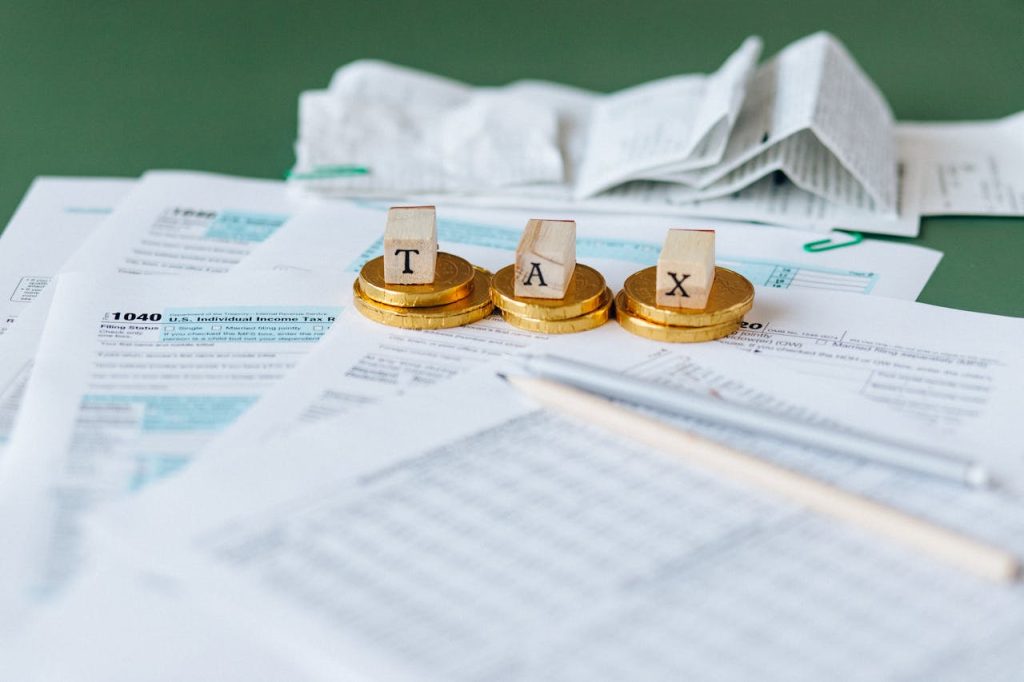
Image source: pexels.com
As the end of the year approaches, many people focus on holiday plans, travel, and family gatherings. But there’s another deadline that can have a much bigger impact on your wallet: the tax move you must make before December 31st. Missing this window could mean leaving thousands of dollars on the table. Year-end tax planning is more than just checking a box; it’s a chance to make smart decisions that keep more money in your pocket. If you know where to look, you can use this tax bonanza to your advantage. Let’s break down the tax move that can make a real difference—if you act before the calendar flips.
1. Max Out Your 401(k) Contributions
The primary tax bonanza for most people is maximizing contributions to a workplace 401(k) plan. Contributions you make to a traditional 401(k) are taken out of your paycheck before taxes, lowering your taxable income for the year. The IRS sets annual contribution limits (for 2024, it’s $23,000 if you’re under 50, or $30,500 if you’re 50 or older). Every dollar you put in before December 31st reduces your taxable income, potentially saving you thousands in taxes.
For example, if you’re in the 24% tax bracket and you contribute an extra $5,000 before the deadline, you could save $1,200 on your current tax bill. That’s money you keep, not the IRS. Plus, those pre-tax dollars continue to grow tax-deferred until you withdraw them in retirement. It’s a win-win, but only if you act before the end of the year.
2. Harvest Investment Losses
Another smart tax bonanza move is “tax-loss harvesting.” This strategy involves selling investments that have lost value to offset gains you’ve realized elsewhere in your portfolio. If your investments are down, locking in those losses before December 31st can help reduce your tax liability—especially if you’ve had a strong year in other assets.
The IRS allows you to use losses to offset capital gains, and if your losses exceed your gains, you can deduct up to $3,000 of losses against regular income. Any extra losses can be carried forward to future years. This isn’t just for stock market pros—anyone with a taxable brokerage account can use this strategy. Just be sure to avoid the “wash sale” rule, which disallows the deduction if you buy the same or a “substantially identical” investment within 30 days.
3. Make Charitable Contributions
If you itemize deductions, giving to charity before December 31st is another way to unlock a tax bonanza. Cash donations, gifts of stock, or even contributions to donor-advised funds can all count. The IRS generally allows you to deduct up to 60% of your adjusted gross income for cash gifts to qualified charities, and up to 30% for gifts of appreciated assets.
Donating appreciated stock, in particular, can be a double tax win: you avoid paying capital gains tax on the growth, and you still get a deduction for the current value. Just make sure your donation is completed before year-end for it to count this tax year. This move can lower your tax bill while supporting causes you care about—a financial and personal win.
4. Fund a Health Savings Account (HSA)
If you have a high-deductible health plan, contributing to a Health Savings Account (HSA) before December 31st is another tax bonanza opportunity. HSA contributions are triple tax-advantaged: you get a tax deduction up front, tax-free growth, and tax-free withdrawals for qualified medical expenses. For 2024, the limits are $4,150 for individuals and $8,300 for families, with an extra $1,000 catch-up for those 55 or older.
Unlike IRAs, where you can often contribute up to the April tax deadline, some employers require HSA contributions to be made by December 31st to count for the current year. Check your plan rules and make any last-minute contributions before the cutoff. This move can be especially powerful if you have upcoming medical expenses or want to build a tax-free health nest egg for retirement.
5. Review and Adjust Withholding or Estimated Payments
If you received a year-end bonus, side income, or had a life change this year, check your tax withholding or estimated payments. Underpaying taxes can lead to penalties, while overpaying means giving the government an interest-free loan. Use the IRS Tax Withholding Estimator or consult a trusted IRS resource to make sure you’re on track. Adjusting before December 31st can help you avoid surprises in April and optimize your tax bonanza for the year.
For gig workers, freelancers, or anyone with a variable income, making an extra estimated payment before the deadline can save you from penalties and keep your tax situation under control. Don’t wait until tax time to find out you’ve missed the mark.
Take Action Before the Year Ends
The most effective tax bonanza strategies require action before December 31st. Whether it’s maximizing your 401(k), harvesting losses, giving to charity, contributing to your HSA, or tweaking your withholding, waiting until January is too late. Make a checklist and carve out time now to make these moves. If you’re unsure, a quick call to a tax advisor or using a reputable online tax software can help you run the numbers and prioritize your efforts.
Remember, the tax code rewards those who plan ahead. By taking advantage of these year-end opportunities, you can keep more of your hard-earned money and set yourself up for a stronger financial future. What’s your go-to tax bonanza move before year-end? Share your tips or questions in the comments below!
What to Read Next…
- 5 Ways Missing One Tax Form Can Cost Your Heirs Thousands
- 6 Tax Breaks That Vanished Before Anyone Noticed
- What Tax Preparers Aren’t Warning Pre Retirees About In 2025
- 6 Tax Moves That Backfire After You Sell A Property
- How A Rental Property In The Wrong State Can Wreck Your Tax Bracket

Travis Campbell is a digital marketer/developer with over 10 years of experience and a writer for over 6 years. He holds a degree in E-commerce and likes to share life advice he’s learned over the years. Travis loves spending time on the golf course or at the gym when he’s not working.































